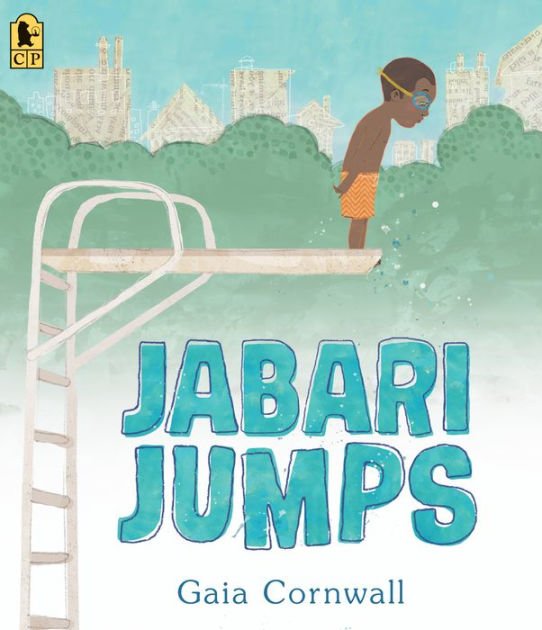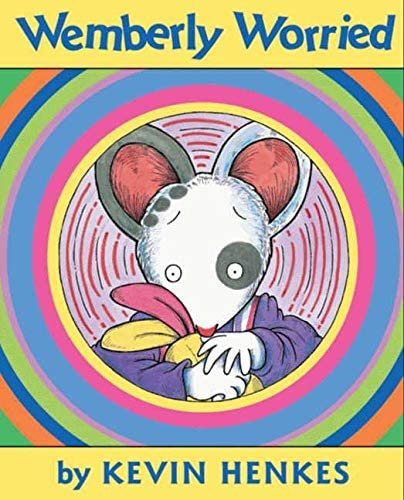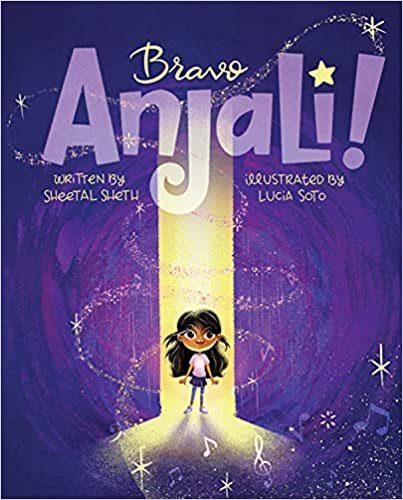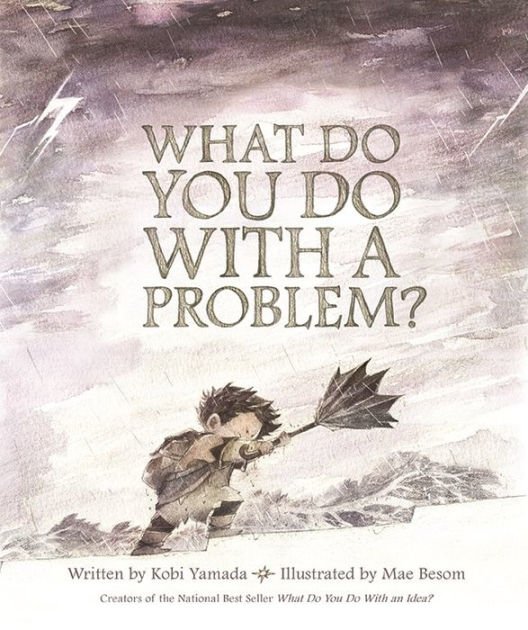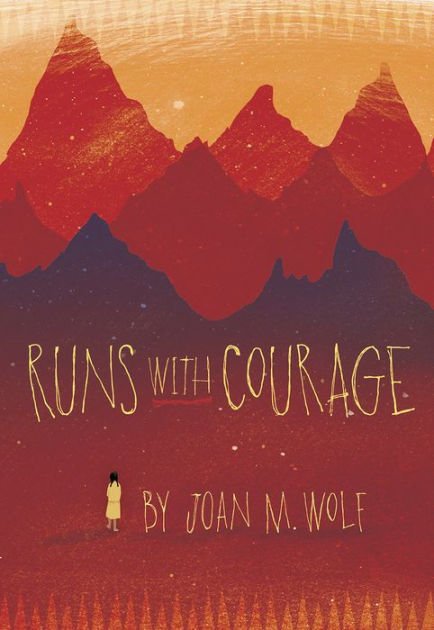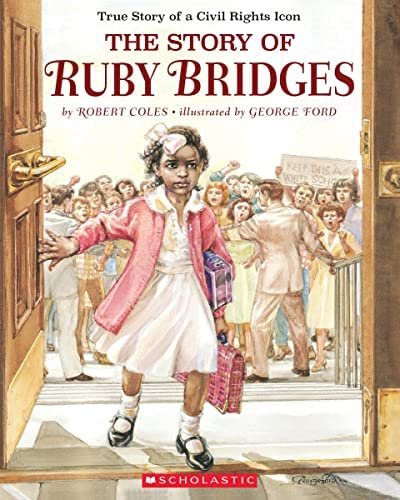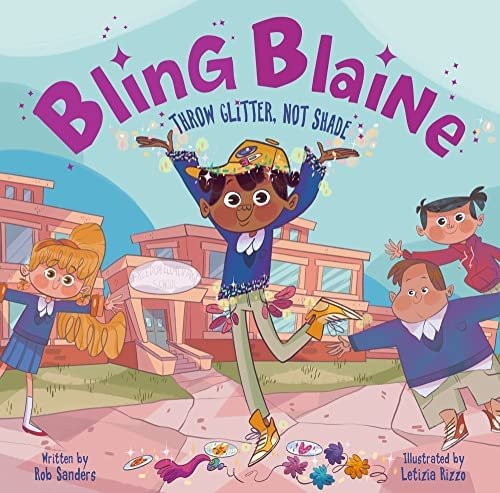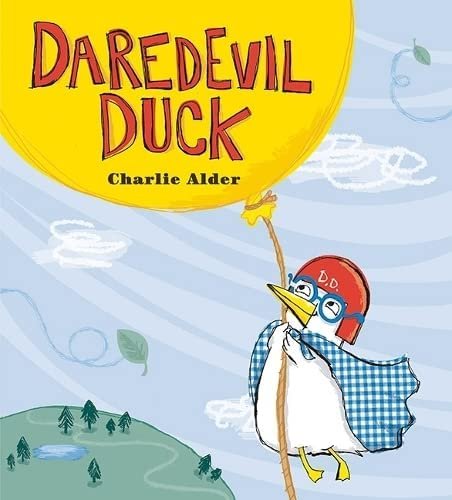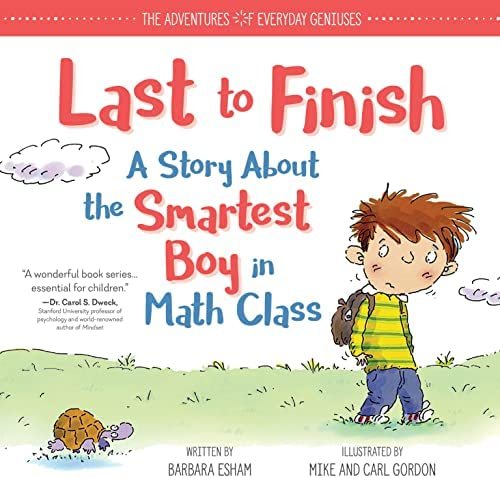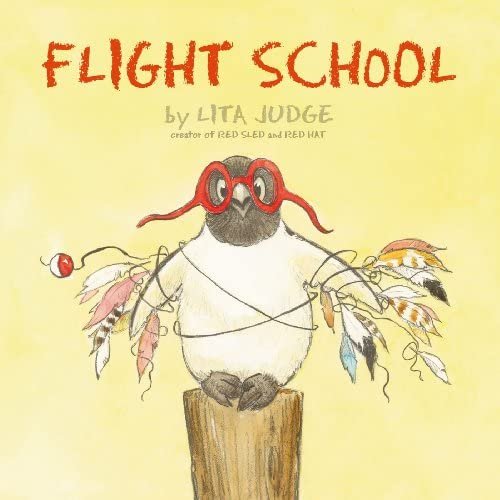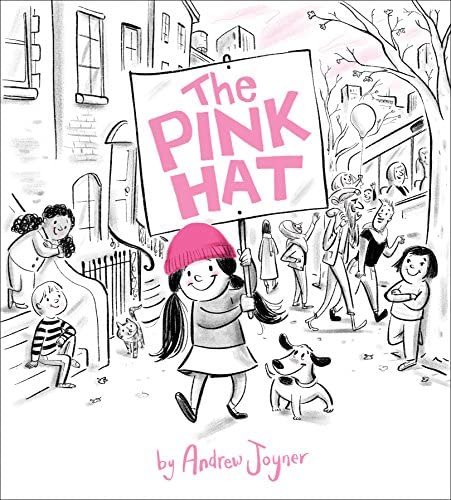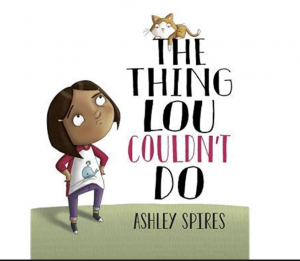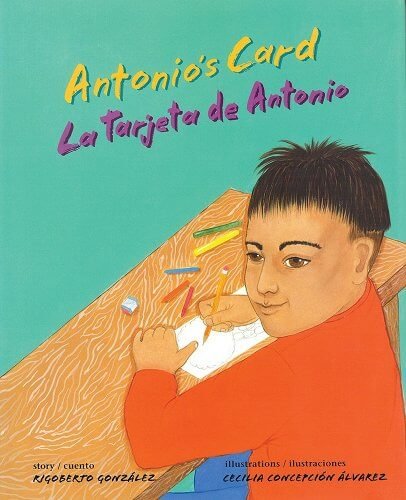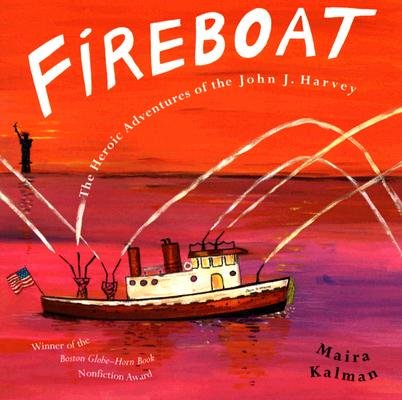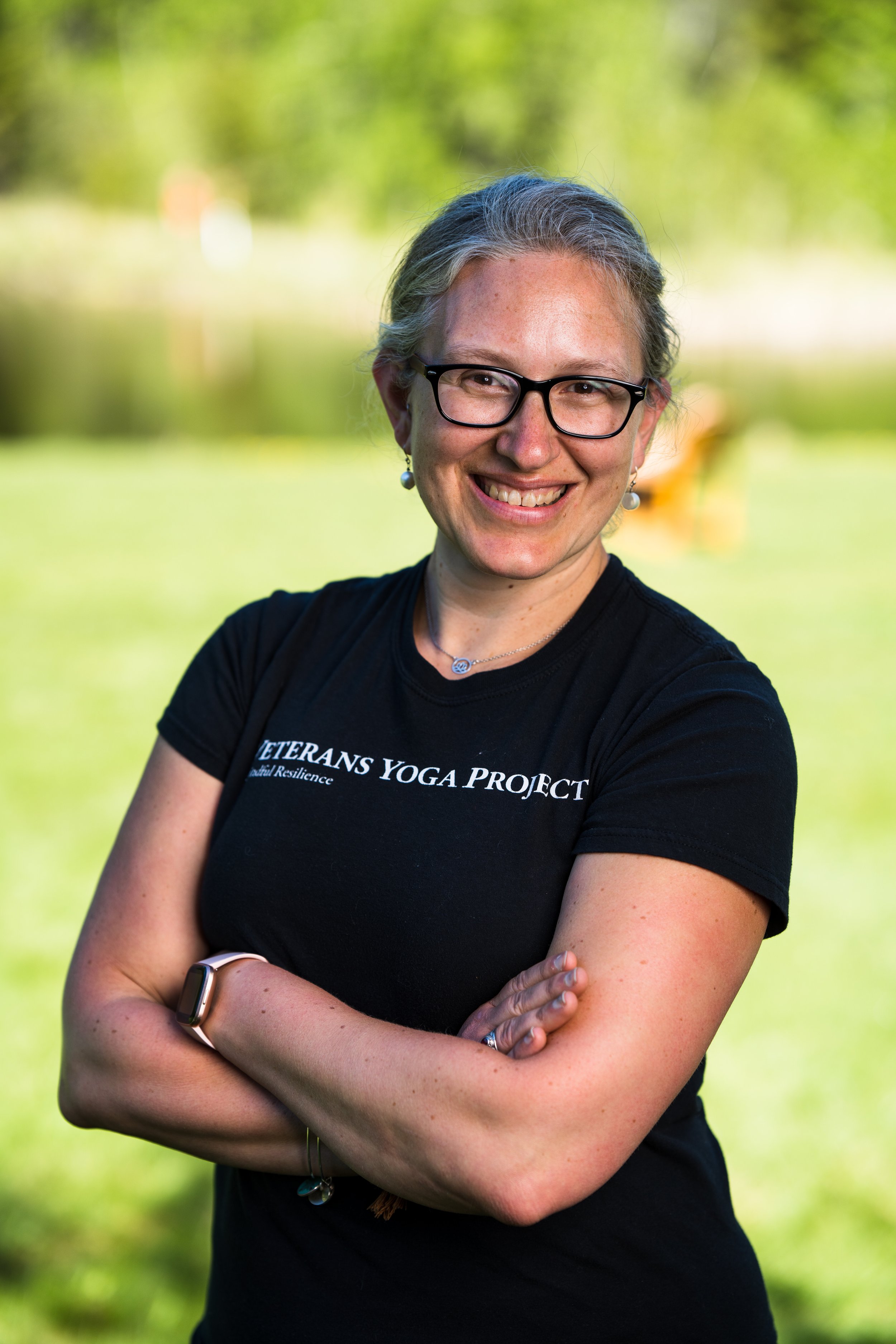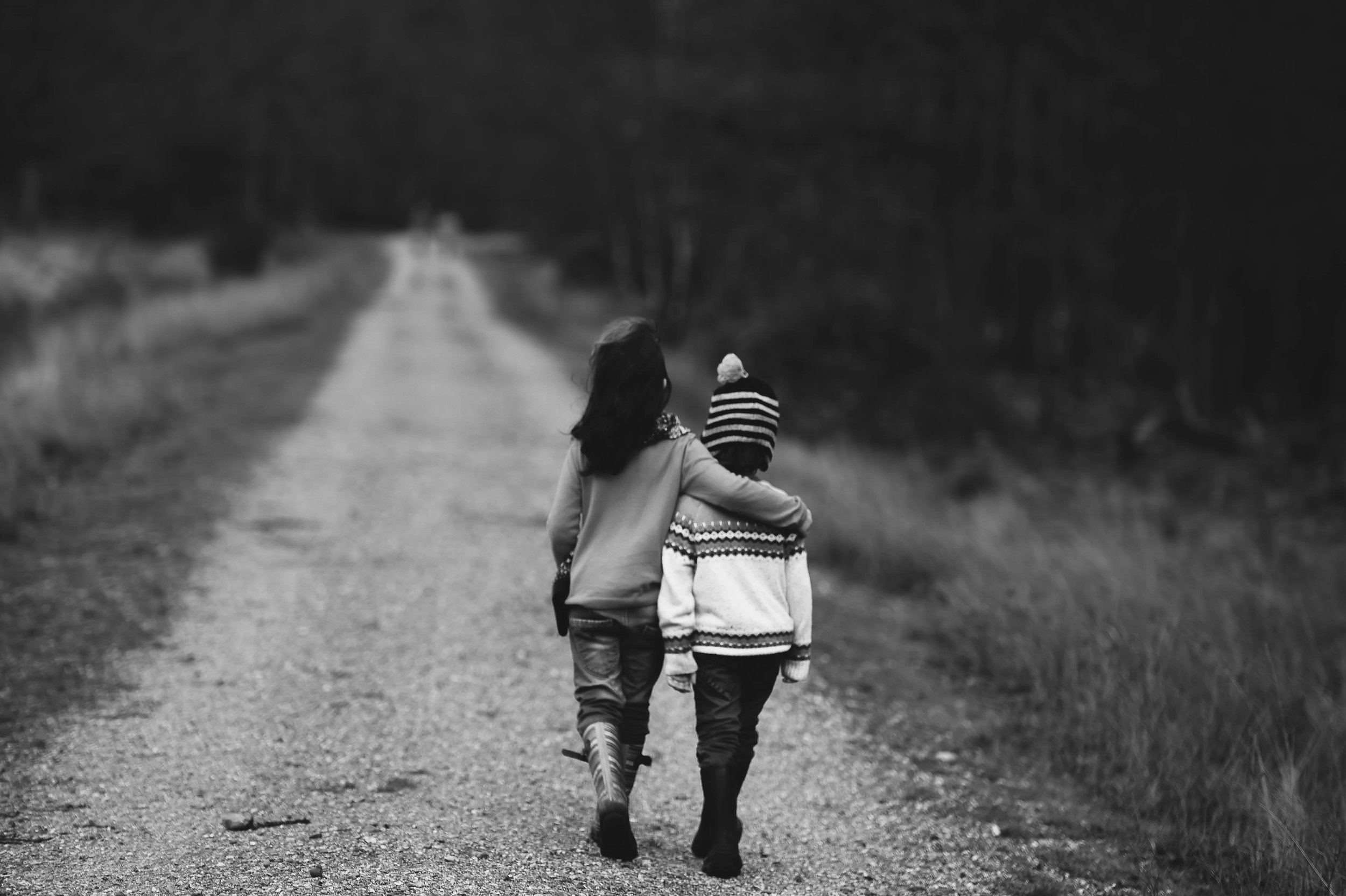Book to inspire courage
Books to inspire courage
The 5 layers of courage and the read alouds that inspire kids to tap into their own bravery.
Kids and teens are growing up in a world where they’re being compared to others’ abilities, test scores, and talents. They are typically not taught that behind every success is failure, rejection and resilience and courage. For many, courage needs to be cultivated as it is not always what it seems. What sometimes seems brilliant, impressive and powerful is often linked to fear, risk and self-doubt.
There are 5 layers of courage that we’ve chosen to highlight this month. They are Physical Courage, Emotional Courage, Intellectual Courage, Social Courage and Moral Courage. We’ve included some recommended read alouds that can be used to help teach children to foster these different types of courage.
Physical Courage
Physical Courage is feeling the fear, yet choosing to act. Think running into burning buildings, facing an enemy, climbing a mountain, or protecting others.
Fireboat: The True Heroic Adventures of the John Jay Harvey by Maira Kalman: The John J. Harvey fireboat was the largest, fastest, shiniest fireboat of its time, but by 1995, the city didn't need old fireboats anymore. So, the Harvey retired, until a group of friends decided to save it from the scrap heap. Then, one sunny September day in 2001, something so horrible happened that the whole world shook. And a call came from the fire department, asking if the Harvey could battle the roaring flames. In this inspiring true story, Maira Kalman brings a New York City icon to life and proves that old heroes never die.
The Thing That Lou Couldn’t Do by Ashley Spires With humor and endearing artwork, Spires sensitively portrays Lou procrastinating, making excuses, imagining alternatives and denying she cares. Ultimately, Lou faces her fear, and although she fails, the effort empowers her, encouraging a growth mindset. All the while, Lou’s friends model compassionate friendship by offering to teach her how to climb and then moving the game. This book makes a perfect choice for a character education discussion about courage or resilience, or a life-skills lesson on facing challenges.
Jabari Jumps by Gaia Cornwall: Jabari is definitely ready to jump off the diving board. He’s finished his swimming lessons and passed his swim test, and he’s a great jumper, so he’s not scared at all. “Looks easy,” says Jabari, watching the other kids take their turns. But when his dad squeezes his hand, Jabari squeezes back. He needs to figure out what kind of special jump to do anyway, and he should probably do some stretches before climbing up onto the diving board. In a sweetly appealing tale of overcoming your fears, newcomer Gaia Cornwall captures a moment between a patient and encouraging father and a determined little boy you can’t help but root for.
Emotional Courage
Emotional courage is following your heart, or when you take risks that make you feel things. Examples of emotional courage are facing your fears, expressing your passion, or showing your vulnerability.
After the Fall by Dan Santat: Everyone knows that when Humpty Dumpty sat on a wall, Humpty Dumpty had a great fall. But what happened after? Caldecott Medalist Dan Santat's poignant tale follows Humpty Dumpty, an avid bird watcher whose favorite place to be is high up on the city wall―that is, until after his famous fall. Now terrified of heights, Humpty can longer do many of the things he loves most. Will he summon the courage to face his fear?
Bravo Anjali by Sheetal Sheth: This book about courage shows that sometimes being brave is hard because others don’t want you to shine. Anjali loves drumming on her tabla. But when her friend Deepak accuses her of showing off, Anjali is hurt. She makes a mistake on purpose, but that doesn’t stop Deepak from telling people Anjali is only getting attention is tabla class because she’s a girl. Anjali is furious and hurt at the same time. She wants to win the upcoming music contest, but if she does will Deepak tease her even more? Anjali has to decide whether to “dim her light” or to shine like the star that she is.
Antonio’s Card/La tarjeta de Antonio by Rigoberto González. Antonio loves words, because words have the power to express feelings like love, pride, or hurt. Mother's Day is coming soon, and Antonio searches for the words to express his love for his mother and her partner, Leslie. But he's not sure what to do when his classmates make fun of Leslie, an artist, who towers over everyone and wears paint-splattered overalls. As Mother's Day approaches, Antonio must choose whether — or how — to express his connection to both of the special women in his life.
Intellectual Courage
Intellectual courage involves expanding your horizons, letting go of the familiar, or recognizing that your idea may be justified when society thinks it is absurd.
What do you do with a problem? by Kobi Yamata: This is the story of a persistent problem and the child who isn't so sure what to make of it. The longer the problem is avoided, the bigger it seems to get. But when the child finally musters up the courage to face it, the problem turns out to be something quite different than expected. This is a story for anyone, at any age, who has ever had a problem that they wished would go away. It's a story to inspire you to look closely at the problem and to find out why it's here. Because you might discover something amazing about your problem... and yourself.
Wemberly Worried by Kevin Henkes: A mouse named Wemberly, who worries about everything, finds that she has a whole list of things to worry about when she faces the first day of nursery school.
Last to Finish: A Story About the Smartest Boy in Math Class by Barbara Esham: This positive math story for kids is perfect for anyone who has ever struggled with learning by memorization. Readers of all ages will discover that struggles don't always mean you're bad at something, but that maybe you just learn differently from others.
Social Courage
Social courage is being yourself in the face of adversity, to not conform to the expectations of others, and being able to take risks and be yourself in the face of social scrutiny.
Bling Blaine: Throw Glitter, Not Shade by Rob Sanders: Blaine’s a boy who loves to shine . . . well actually, he loves to sparkle. Whether it's his uniform, his book bag, or even his baseball cap, Blaine’s all about the bling. But when his bling rubs some people the wrong way, and the bullying begins, Blaine—along with the entire school—starts to lose his shine. Can Blaine's friends bring back his glimmer and gleam by glittering up their own wardrobes? This delightful story proves that anyone can love bling, and that happiness comes when allies band together to throw glitter—not shade.
Flight School by Lita Judge. A young penguin may not have exactly the right body for flight, but he has the "soul of an eagle." Eager to enroll in flight school and learn what it takes to soar, he is not discouraged. Fortunately, the other birds are so taken with his determination they do what it takes to make his dreams come true.
The Story of Ruby Bridges by Robert Coles: The year is 1960, and six-year-old Ruby Bridges and her family have recently moved from Mississippi to New Orleans in search of a better life. When a judge orders Ruby to attend first grade at William Frantz Elementary, an all-white school, Ruby must face angry mobs of parents who refuse to send their children to school with her. Told with Robert Coles' powerful narrative and dramatically illustrated by George Ford, Ruby's story of courage, faith, and hope continues to resonate more than 60 years later.
Moral Courage
Moral courage is standing up for what is right. Think: helping someone shovel out of a snowbank even if they’re running late for work. Moral courage is doing what is right even if it means going against pressure to do otherwise.
Runs with Courage by Joan M. Wolf: Ten-year-old Four Winds is a young Lakota girl caught up in the changes brought about by her people's forced move to the reservation. Set in the Dakota Territory, it is the year 1880. Four Winds has been taken away from her family and brought to a boarding school run by whites. It is here she is taught English and learns how to assimilate into white culture. But soon she discovers that the teachers at this school are not interested in assimilation but rather in erasing her culture. On the reservation, Four Winds had to fight against starvation. Now she must fight to hold on to who she is.
Daredevil Duck by Charlie Adler: Despite his name, Daredevil Duck happens to be afraid of everything. Everything. But one day Mole requests Duck's help retrieving a balloon. Daredevil Duck overcomes his fears to help, and in doing so makes a new friend. I love how duck needed to be brave in order to help someone else, instead of proving his bravery for a self-serving reason.
The Pink Hat by Andrew Joyner: Written in a gentle and age-appropriate tone for 4 to 8-year-olds, this book is a great springboard for discussion about topics like diverse communities, activism, and women’s equality. The Pink Hat symbolizes solidarity and change and is a reminder to readers that they’re never too young to start shaping the future they want.
Layers of courage
Learn how to cultivate courage
I had the privilege of speaking with Brianna Renner, military veteran and chief operating officer for the Veterans Yoga Project, on how we can help our children cultivate courage in their body, mind and heart.
Brianna honorably served in the United States Marine Corps where she served as an avionics shop supervisor and served as a trainer for the MALS-11 Noncommissioned Officer Leadership Course. Brianna joined the Veterans Yoga Project ranks in 2014 as a volunteer. In 2015, became the Assistant Director and in 2016 made the shift to Director of Programs where she oversaw initiatives that increased the accessibility of yoga to our veterans both before and during the pandemic. In 2021, Brianna was promoted to Chief Operating Officer where she oversaw the day-to-day operations of VYP’s service to veterans.
She is a graduate student at the University of Denver, perusing her Masters of Nonprofit Management with concentration in Mission Driven Operations with a GPA of 4.0 and an expected graduation date of May 2024. As a yoga professional, Brianna holds her 200-hour certification in the Kripalu tradition, her 300-hour certification in alignment and therapeutic-based yoga. As a Yoga Alliance Continuing Education Provider, she has taught over 3,000 hours of classes and workshops for organizations like the Soma Yoga Institute, the Mayfest Yoga Festival, and the California Department of Veterans Affairs, Women’s Division.
I hope you enjoy the conversation as much as I did!
“Sensing” our intuitive nature
honoring your unique, individual and authentic self
In yoga there is a sanskrit word Pratyahara which means to withdraw the senses. Our senses are what connect us to the outside world. When we practice withdrawing from our senses we connect to our inner world. Through quieting our mind and focusing on our inner self we tap into a higher frequency where we are more able to connect to our intuition and higher consciousness.
When working with children I talk regularly about the importance of using contrast in your teaching. For example, if I want children to be still I am going to allow them moments to jump, wiggly and move freely. Same concept applies when I am working with children and helping them tap into their intuitive nature. I find it most helpful to start by exercising and acknowledging all of our senses and then slowly pulling them back and noticing what feels different.
A few simple activities that tap into the 5 senses are below. For our Yogi Beans classes we will focus on one sense a week and create a nice 5 week series on the 5 senses while also teaching our students about sensory withdrawal and the introduction to meditation.
Sight: Take a number of objects (pom poms, feathers, dice, pen, bell, etc.) and place them on a yoga mat. Cover them with a blanket. Tell children, "there are [however many] objects on this yoga mat. We are going to look at them for ten seconds. Ready, set, go!” Now, pick up the blanket for 10 seconds to reveal the objects. Next, quickly cover them up again and ask each child to name one object they saw. Ask, “how did it make you feel to only have 10 seconds to look at all the objects on the blanket?”
Sound :Ask children to be very quiet. Sit for about 20 seconds in complete silence and then ask children to tell you all the sounds they start to hear. For example: birds, clock ticking, wind, people talking, cabs honking, other people’s breathing. Ask them if the noticed how once they shifted their attention they became aware of sounds that were there all along. A great reminder of energy flows where attention goes.
Touch: This game introduces the concept of mindful touch. Take an empty bag or box and fill it with different objects. For example, cotton balls, feathers, tin foil balls, etc. Pass the bag around the circle and give each child a turn to put his/her hand in the bag and describe what s/he feels. Encourage children to use descriptive words or adjectives such as soft, hard, rough, prickly, squishy, etc.
Taste: Tell children you will be practicing mindful eating with a raisin. Explain that you will be using each of your five senses to explore the raisin fully, and that this takes patience and self-control. Have the class sit down at a table or desks, and hand out one raisin to each child. Ask them not to touch the raisin, but rather use their sense of sight to look at it. What does the raisin look like? What shape is it? What color is it? Next, ask children to use their sense of touch to pick up the raisin. What does the raisin feel like? How would you describe its texture? Now, ask children to close the raisin in their palm and shake it. Is the raisin making a noise? Did you ever think you would listen to a raisin? Next, ask children to smell the raisin. What does the raisin smell like? Does it smell sweet? Does it smell fruity? Now ask children what kind of fruit makes a raisin? Who do you think put the grapes in the sun to have them dry out?
Smell: Fill 5 small bottles with the following scents. (Alternatively, you can use any spices or scents you have on hand)
Cinnamon
Tea Tree Oil
Peppermint Oil
Lemon
Vanilla Extract
Cumin
Pass one scent around the room and ask the children how the scent makes them feel, if it brings up a memory or thought, and if the scent is pleasing or displeasing, Remember there are no right or wrong answers. Just like our sense taste everyone’s sense of small may have different preferences.
After performing any of these activities.
Seeing children for who they are
Honoring your unique, individual and authentic self
As a child I was lovingly referred to as “Loony Lauren.” My mother says that I was a quirky child, putting on shows for anyone that would watch. I had a vivid imagination and preferred playing solo than with groups of friends. I've always walked to the beat of my own drum and found a certain contentment being on the fringe and not following the herd. With that said I acknowledge I am a cis-genered white women and my quirkiness was something I chose and not put upon me by society, which I imagine is where the state of contentment came from.
The question I ask myself is: how can we ensure that every child, no matter their background, race, gender, ability, or sexual orientation, knows that it is 100% acceptable for them to be exactly who they are? They need not change any part of themself to please or meet societal standards. As parents and teachers, what can we do to help our children be secure in their being and honor their truest self?
I believe the answer lies in listening to them – I mean really listening and seeing them for who they are, and not who we want them to be. There is a beautiful poem in the book, The Prophet, by Kahil Gibran titled On Children. He says on children, “They come through you but not from you, And though they are with you yet they belong not to you.” Each time I read the poem I am reminded that although as parents we helped create and nurture our children into being - they are very much their own autonomous self and we must be prudent not to try and make them like us or deny their individuality because it differs from how we want or thought they would be.
When a child comes to us and questions their identity or shares a story or reflection of an experience we can listen with open and honest ears without judgment or motive. As a parent, I understand that this can be challenging if we sense our child’s choice or identity may cause them hardship or challenges in the future. The hardest thing for a parent is seeing our child hurt or in pain. However, by not acknowledging our child’s authentic self we ourselves become the hardship and end up hurting them whether or not that was our intention.
By supporting our child’s interests and helping them develop the areas in their lives which bring them enjoyment and delight we are showing them that we see them and accept them for who they are. If your son enjoys dolls get him the dolls - If your daughter loves playing with toy trucks by her the trucks. If your teenage son wants to wear nail polish to school go to CVS and choose colors together. When a child feels accepted and loved in their home they will be more likely to go out into the world feeling whole and loved for who they are.
The truth is not everyone is going to like you and not everyone is going to like your child - and as hard as that may be to hear that is OKAY! Teaching our children and students that outside approval and validation does not go nearly as far as cultivating self-love and self- worthiness are essential to become a self-actualized adult.
Below are a few of my favorite children’s books that speak to honoring your unique, individual and authentic self.
Own your truth
Our truth is different from our opinion
Much of the dialogue about truth and honesty with children centers around being honest with others and telling the truth. While those values are highly important to cultivating safe and nurturing relationships, another aspect of truth telling is being comfortable speaking our own truth, which ultimately leads to a life of authenticity and fulfillment.
Our truth is different from our opinion. Our truth is about how we feel and runs deeper than a judgment or perspective on a certain situation. Our truth is that little voice inside of us. It’s that internal compass that knows our true north, so to speak.
The other day, I caught my daughter and our neighbors playing in our backyard. I caught them trying to climb over a fence in our yard and immediately put the kibosh on their little plan. When I spoke with my daughter later I asked her why she made that choice. As children tend to do, she blamed the other children and said “they told me to do it” . This was the perfect opening for my next question which was “was there a little voice inside of you that knew it was wrong?” She looked up at me with her big eyes and whispered yes and then gave me a hug. It prompted a healthy discussion about listening to that inner voice and reminded me of one of my favorite poems to share with kids: It’s called The Voice by Shel Silverstein.
“There is a voice inside of you
that whispers all day long,
I feel that this is right for me,
I know that this is wrong."
No teacher, preacher, parent, friend
or wise man can decide
what's right for you - just listen to
the voice that speaks inside.”
While speaking with children about being honest in their conversations with others we also want to remind them that the most important person they need to be honest with is themselves.
Speaking hard truths
When life throws us hard truths we want to be open with our children
Growing up my parents often believed they were sheltering and protecting me by not telling me the truth about difficult situations. Even today as an adult I still feel that they often don’t tell me the entire truth so as not to worry or upset me.
Now that I am a parent I understand the difficulty of sharing hard truths with my children yet I know that I am doing my children a disservice if I chose to push the difficult conversations under the rug. Children are intuitive by nature and closely connected to source energy. When we lie or selectively omit the truth they can feel that and internalize it. It may also cause them to question their own intuitive nature.
When life throws us hard truths we want to be open with our children in an age appropriate way. As adults we have to ask ourselves if the omission of the truth is more about making ourselves feel comfortable rather than protecting our children. When we are truthful by speaking to our children age appropriately about difficult situations we leave the dialogue open for them to ask questions and model the importance of speaking truth even when it’s not always easy.
Below are some pointers on broaching difficult topics with your children.
Create a safe space to talk. Say “I know these topics are hard to talk about and I want you to always ."
Be sensitive to children’s emotions. You can start by acknowledging how the situation makes you feel. and ask your child, "What are you feeling right now?"
Reassure with both words and gestures. Say, "Our Family is safe” Hugs and snuggling go a long way too!
Acknowledge feelings – yours and theirs. Say, "It's OK to feel angry or confused. Those feelings are natural and we all feel them.
KISS: Break down issues to their simplest terms. For example, For hate crimes, say, "There are groups of people that are not treated fairly or equally. For death - “Nana died. She is not coming back.”
Reassure that someone is in charge. Say, "Mommy and Daddy (or your grown-up) is protecting our family.
Find out what they know. For older children you will want to find out what they’ve already heard. Be simple and direct in your answers and try to stay away from too much details.
Look for positives. Like Mr Rogers reminds said when we see or read something scary in the news “we can look for the helpers. You will always find people who are helping.”
Practice healthy communication
Healthy communication with children is a pillar for healthy relationships
Healthy communication with our children and students is a pillar for healthy relationships. When speaking about trust and honesty with children it’s important to explain the difference between the truth and being brutally honest. Young children have a knack for being unfiltered and saying whatever is on their mind. I can remember when my girls were younger and we were at the airport, my youngest (must have been 4 years old at the time) looked at an older gentleman and said quite loudly - “Wow, Mommy - look how old that man is. He is so old!” Eek - I was mortified!
We want to instill the practice of both Satya (Truthfulness) and Ahimsa (Non-Violence in actions and words). For example, even if my daughter did not have fun at her friend’s birthday and thought it was boring I don’t want her to announce “Your birthday party was boring and I did not have fun!” Balancing honesty with compassion is a skill we can aim to start teaching in the early years.
I’ve found using the 3 gates method an effective way to teach the importance of balancing Satya (truth) with Ahimsa. (Non-Violence) Before speaking we ask ourselves the following 3 questions.
Is it true?
Is it kind?
Is it necessary?
If the answers to the 3 gates are all yes then go ahead and speak what’s on your mind. However, if the answers to the 3 gates remain uncertain it may be best to speak with a grown-up first and explain the situation before speaking it to others. This method teaches kids that even if something is true if it is also unkind and unnecessary we may want to refrain from saying it or speak to a safe adult first about the thoughts and feelings you are having before sharing it with others.
Protect kids cyber activity
Philosophy on parents establishing open and honest communication
Lauren: Our theme for the month of May at The Bean Spot is Trust and Honesty. I have the pleasure of speaking with Fareedah Shah, also known as Cyber Fareedah. Fareedah is an award winning Forbes ‘30 Under 30,’ online safety educator, which means she helps parents protect their kids online, holistically.
Fareedah, my first question for you is, what's your overall philosophy on parents establishing open and honest communication regarding their child's cyber life and cyber activity?
Fareedah: I help parents protect their kids online, holistically. What I mean by that is giving kids the freedom they want, and the safety they need, and that comes from building a foundation of connection, communication and trust.
Lauren: I love what you say about balancing freedom and safety. It’s not about taking the tech completely away, but being open about their usage.
Fareedah: Yes, I mean, you can delay their usage, yet, it doesn't mean that they're not going to be exposed to it. Instead, we want to give them the foundation to protect themselves so when they do go online, they have a basic understanding of your values as a family.
Lauren: Can you define what you mean by a holistic view?
Fareedah: Absolutely. So, it is not just looking at the tech. When we think about protecting kids online, a lot of us jump to parental controls or parental monitoring. When I say holistic, I mean, you're prioritizing your own inner feelings first. You can't give your kids the space they need, and the understanding of the world that they need, without understanding what it means to love yourself, and giving yourself a safe space.
When kids understand what it really means to hold space for themselves, they can then understand how to hold space for other people. This also helps your kids understand wellness and data ethics. For kids who understand that, they're going to do super well in their world once they get older, because tech is not going away.
Lauren: Wow! I didn't think how much of an overlap there would be between the work that Yogi Beans does and the work that you do. A big part of our methodology is that we go beyond the pose. We are teaching practical life skills with a focus on character building, and values such as self-love, self-confidence, and self-worthiness. It makes sense that if you feel good about yourself and you love yourself, your cyber activity is going to be healthier too. You’re not going to want to bully people; you'll know when something doesn't feel good to you.
Can mindfulness help cyber activity?
Fareedah: Oh, yes, absolutely. The more we're mindful about our activities online, the easier it is for us to protect ourselves and our kids. The simple act of thinking before you're sharing information and checking in with our feelings; asking how is that going to affect me or other people before I click. Is this something that I really want to do? Am I posting this because I feel the need to or because I have to keep up with my friends and society. Or am I posting this because I truly want this information out? There is this big boom of wanting to become an influencer. So sitting down with your kids and saying being an influencer is perfectly is great. However, what do you want to do with that influence? What are you trying to gain from it? What was the impact that you want to make? So you're being really mindful of every step that you take online and pausing before you post.
Lauren: Before you react, pausing before you press that post button is very important. Do you have a favorite mindfulness practice to develop safe and healthy cyber activity?
Fareedah: It's going to sound very simple, yet, I believe that you and your community would understand. I always say pausing and breathing and checking in with yourself and your emotions helps you prevent yourself from becoming victims of scams, and victims of grooming.
I also believe the practice of healing yourself and going through an emotional journey to heal your inner wounds, breathing, and taking time to slow down, all supports healthy cyber activity. Everything is connected, all of our energies. When we're teaching kids how to operate in the online space, we are teaching about consent, and that goes into privacy, which then goes into safety. Another thing to consider is, as adults, are we thinking about the consensual posting of our kids, and what stories we tell people online? Are we making sure that our children are aware that we are opening up private moments in our household. You might be telling your child not to do one thing; yet, then you violate their privacy and their autonomy by doing other things.
Lauren: Right, that definitely ties in to trust and honesty and openness. What you said about emotional posting really resonates. Even as adults, we may post something, and then we delete it, thinking why did I do that? Tying healthy cyber habits into our emotional state makes so much sense.
Fareedah: Absolutely. We post a lot of information about ourselves, so yes!
Lauren: How can teachers incorporate the idea of healthy cyber activity into their classes?
Fareedah: By talking about it. Having open conversations and talking about their personal experiences, and having it be a discussion. Listening to the kids is really important. Sometimes we can forget that the people that we're trying to impact - their opinions of the impact matters. This helps us evolve and have better and more elevated conversations. When you're being listened to as a human being, you're more open.
Lauren: Absolutely. We need to listen to what our children or students are saying. When we feel seen and heard we are more inclined to be honest because we feel our opinions are valued.
We are especially seeing the effects that cyber activity has on children’s mental health. On a societal level, where are we at with having open and honest communication with children about their cyber life and activity?
Fareedah: We're getting better at it. I believe over the years we've realized that children's voices matter. The access children have to the internet provides a certain freedom. If you really want to know what kids are thinking about, rest assured there is a forum or a chat room you can find information. The internet has good, bad, ugly and beautiful sides to it. To understand what children are feeling we need to make room to search for the information.
Lauren: What would happen if we don't develop open and honest communication with our children about their cyber usage?
Fareedah: Well, in one word: disaster. It's not going to be pretty because we're going to start becoming more controlling and control does not does not give us the results we want. When you try to control people, even if the control is coming from a well-intentioned place, it's never going to work. This is why I'm so such an advocate for the holistic view of safety and security and starting from within.
Lauren: Can you speak to that balance between communication and privacy and your child’s cyber usage?
Fareedah: I am actively working to change my mind about balance. What I’ve found is every time I talk about balance it turns into a lot of Type A control in terms of, we did 60% here, so we have to be 40% here, etc. The way that I love to teach is by removing balance all together, and changing your perspective to think about it as harmony. How can I harmonize communication, and privacy? Thinking about what works best for me and my child, in this moment, and not feeling guilty that it may change day-to-day or month-to-month or year-to-year based off of what they have told me or the information I know about them. Parent and child are both human beings and both flowing through this space; they need what is best for each of them in certain moments so it really is just about finding that balance.
Lauren: That makes a lot of sense. There's a synergy between those two words. I can see how balance may make you feel things have to be equal, which can turn into rigidness. I like the use of Harmony!
Fareedah: I've seen it work better in terms of changing the mindset about cyber usage. There's not a lot of guilt and questioning if this working and then if it's not, we change it around.
Lauren: Ah, external versus internal. Yes, I think that is very helpful to think about. Is there anything else you would like to share about honesty and communication with regards to children's cyber activity?
Fareedah: I think what we talked about is a setting up great foundation. Going back to the holistic viewpoint, people have to invest in making time to heal themselves and it could be something as simple and as powerful as yoga and breath work, or picking up a book. One of the books I really love, it just came to my head, is called The Body Keeps Score.
Lauren: Yes! By Bessel Vander Kolk. That book was eye opening and I spoke about that book for so long and recommended it to everyone I spoke with!
Fareedah: I mean, it's so good, right? So, giving your kids and yourself that understanding. When you start seeing things online you can think, “oh, this person does not have self-worthiness or self- love.” You would never comment that way if that self-love was present within you. It's understanding those things as the first step. So, I would love to leave with that.
Lauren: It's doing the inner work, whether it's through reading or meditation, whatever it is. But doing that inner work first will permeate to how you handle yourself online.
Fareedah: Exactly
Lauren: So much of what you said holds a synergy with the work we do and I wasn't necessarily expecting that. I'm so happy I reached out to speak! Can you just tell people where they can find you and if you have any trainings coming up?
Fareedah: I’m @cyberfareedah on all platforms. I have daily videos on YouTube where I talk a lot about holistic online safety. I also delve deep into certain topics about what it really means to protect kids on gaming sites. Actually, my most viewed video so far is the one I did on Roblox.
Lauren: Yes. I watched that one because Roblox is a thing in our house! Fareedah, Thank you so much for speaking to me. I’ve learned a lot and the work you are doing to protect our kids and educate parents on healthy cyber usage is so important!
Bridge to empathy
The world feels more divisive than ever before. Perhaps it’s partly because...
I want to start off by saying I don’t have the answer for this. It’s something I think about and struggle with so I thought I'd share here on The Bean Spot.
The world feels more divisive than ever before. Perhaps it’s partly because we have access to everyone’s thoughts and opinions via social media and the internet. When I see someone post something that I steadfastly disagree with (eg: Something political or socially driven) my first response is to get angry and call that person some cruel name and remind myself how ignorant and stupid they are and how much better I am than them. It’s really hard for me to let anything other than that in my purview. I have a hard time making space or empathizing with how they came to their decision.
These feelings of superiority and hate are not ones I wish to foster, however, it’s really hard for me to empathize or find compassion for people when I feel their opinions are wrong and steeped in hate and ignorance. When I find myself feeling this way, I remember an Anthony Bourdain quote I once read.
“There is something humanizing about putting aside differences, if only for a moment, to discuss how good biscuits taste.”
He spoke about forming a bond with people who share widely different values because they were able to find commonalities in enjoying food and drink. This is something I strive to work on because I know in order for society to move toward betterment, love, unity and fairness we need to be able to sit with those whose opinions differ and try to find a bridge where empathy can cross.
For the past 2 years our children have gone to school wearing masks. Wherever you stand on the debate of if masks should or should not be worn we are now at a crossroads where mask guidelines have changed and many children will soon be allowed to go to school mask-free.
As a mother I am hopefully optimistic and look forward to my kids going returning to a sense of normalcy at school. However, at the same time I know there are going to be children that continue to wear their masks and it’s my responsibility as a parent to remind my daughters that we don’t judge anyone for this specific choice. I’ve been speaking with them about not judging other students for their choice and understanding makes their own choices based on their comfort level and what works for them.
Perspective leads to empathy
Foster empathy by teaching to see situations from other peoples’ perspectives
One practice towards fostering empathy in my students and my own children is to encourage them to see situations from other peoples’ perspectives. Even if something has not happened to them directly I want them to understand that it still matters. One way I try to teach this is by using a story and asking them to see the story from the other person’s perspective.
My favorite example is the story of Goldilocks and the 3 bears. This classic story is told from Goldilocks point of view, however, what if ask children to consider how the Bears felt about someone coming into their home uninvited, eating their breakfast, breaking their chairs and sleeping in their beds! Looking at the story from this angle we find more empathy for the Bears because we can relate to what it would be like if someone did that in our home.
The same approach can be used when we are talking with children about real world circumstances that may not directly affect them, yet, we want them to cultivate a feeling of empathy towards those that are touched by a certain situation. Recently both my daughters had birthdays and we spoke about donating a gift to an organization called Birthday Wishes. Birthday Wishes collects gifts and toys and then distributes them to children who may not otherwise have a birthday celebration. For many young children giving away a toy they just received is not an easy ask and this is understandable. However, if we can tell them the story from the other child’s point of view (eg: “can you imagine what it would feel like to not have a birthday celebration and not receive any presents) we can open up a dialogue and hopefully create more empathy and understanding for the other person’’s circumstance.
Laying the foundation for empathy
Empathy - a character trait that all parents want to instill in their children
Empathy - it’s a character trait that all parents want to instill in their children. The exact definition of empathy is “The ability to understand and share the feelings of another.” For a young child this can be a difficult concept to grasp.
As a parent I can wholeheartedly say it’s not always easy to stay calm during the midst of a child’s meltdown however, when I see my daughters or students struggling and in turn, acting out, I remind myself to pause and acknowledge their feelings before doing anything.
Right now my youngest is working on breaking the habit of sucking her thumb. Breaking any habit is hard, especially one you’ve had since utero! There is a mind-body connection associated with thumb sucking and breaking this habit is bringing up a lot of feelings for her that result in anxiety, clinginess, and big (really big) outburts! I make a point to remind her often that I know breaking habits is so hard and the feelings she is having are normal - and I have them too (specific to anxiety - not thumb sucking) We talk about the feelings we have in our tummy (we call them Tummy Bubbles) and think of ways we can pop the bubbles together. Validating her feelings and showing her that I see her, and hear her, even amongst her outbursts, are ways I can lay the groundwork for her to practice empathy with others.
As the saying goes,,children don’t listen to what we say they listen to what we do. It makes sense then that the most effective way to nurture empathy within our children is to practice it ourselves, especially when it comes to navigating our children’s “Big” feelings.
Keep your head up high
Our mind stores our thoughts and our body stores our emotions
Our mind stores our thoughts and our body stores our emotions. It’s no surprise that changing the way we hold our body can change how we feel.
A quick and effective way to tap into the frequency of confidence and feel more elevated is to notice our posture. Do we stand with our shoulders slumped over or our head hanging down? Do we cross our arms over our chest and block our heart?
Making simple adjustments to the way we physically carry ourselves has an effect on how we feel internally. In our classes we will cue children to sit tall as if they were wearing a heavy crown on their head - like a Queen or King. When we sit like royalty we begin to feel powerful like the King or Queen that we are. Another posture we take when scared is to block our heart. Instead of crossing our arms over our chest we can take our hands and clasp them behind our back. It’s a more vulnerable position however, it’s one that leads and shows the world you have an open and confident heart.
Another common body posture is to cross our arms over our heart - we especially do this when we want to protect ourselves and close ourselves off. A counter posture to this is to take our arms and cross them behind our back. When we do this our body language says we are confident, ready and open for whatever is in front of us! If bringing your hands behind your back is uncomfortable you can also try placing your hands on your hips (ala Peter Pan!)
A fun way to help kids express a more confident body posture is to ask them to put their body into the position of the letter X or Y. Both of these positions are open and bold and exude a feeling of pride and accomplishment. (think of a gymnast in the Olympics after they compete with their arms in the air in a Y position!). You can create a game of X* Y Freeze dance and instead of calling out Freeze, call out the letter X or Y and ask your students and have them freeze in that position. Ask them to notice how they feel in each position. The mind-body connection is powerful, accessible and plays a major role in influencing how we think and feel. It’s a wonderful gift as a teacher to help children tap into this concept at a young age.


